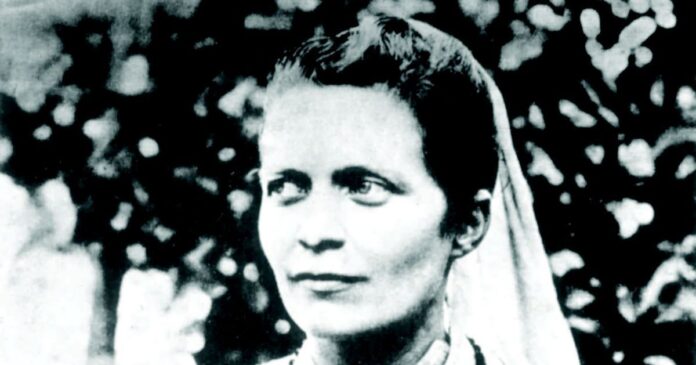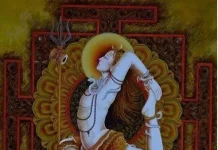We recently celebrated the 156th birth anniversary of Sister Nivedita on 28 October 2023. One of the important messages of this extraordinary disciple of Swami Vivekananda was for the women of future India. Though this message is nearly a century old, it will be observed that much of this is yet to be carried out in practice by the modern Indian women.
By Dr Arpita Mitra
Undoubtedly, she was writing at a time when Indian women did not have basic rights such as access to education, and the greatest ill that plagued society was the practice of child marriage. In spite of the efforts of illustrious social reformers and the presence of accomplished women such as Kadambini Ganguly, the first Indian lady doctor, and others who were Nivedita’s contemporaries, much of these progressive changes were limited to a certain section of the society. Nivedita herself mentions that at the time when she started the Ramakrishna Girls’ School (presently the Sister Nivedita Girls’ School), only 6.5% of Bengali girls received formal education, whereas Bengal was quite advanced in such matters.
The scenario has changed significantly; however, we cannot say it has changed satisfactorily. A large section of the rural population is yet to advance fully in terms of women’s rights and empowerment. Further, among the urban population where women are educated and employed, there is still a dissonance in terms of possibilities and actual development. The reasons for this are the following. Firstly, while we want progress, we are unwilling to let go of old modes of relationships and social organization. The second and related factor is that while women are now educated and financially independent, true independence and autonomy has not yet been achieved. It is in this context that Nivedita’s message for the women of future India become particularly relevant.
A cardinal question is, however, how to put an old ideal in a new form, suitable for the changed circumstances and requirements of the new age. It is clear that the path for modern Indian women lay at a synthesis of the old and new, the Western and the Indian. It is not desirable that we jettison the old to embrace the new unthinkingly. However, the question is what to take from the old and what from the progressive waves of the new age. These were questions that Nivedita and her guru also pondered upon. Nivedita remarked, ‘Change is inevitable, even desirable, but change need not mean decay…[we need] some scheme of education which shall enable the people to conserve all that they have already achieved, while at the same time they adapt themselves to the needs of the new era.’ She wrote: ‘Daily the life of our Indian womanhood is shrinking. Day by day, their scope is being lessened. Unless we can capture for them the new world of expression, they will steadily continue to lose more and more of the world they had. If Sita and Savitri are ever to be born of Indian mothers, we must create new types for them, suited to the requirements of the modern age.’
Nivedita also recorded her impressions about what Swami Vivekananda thought about such a momentous issue: ‘He was always watching for chance indications of the future type. A certain growth of individualism was inevitable, and must necessarily bring later marriage, and perhaps a measure of personal choice, in its train.’ At the same time, ‘He could not foresee a Hindu woman of the future, entirely without the old power of meditation. Modern science, women must learn: but not at the cost of ancient spirituality. He saw clearly enough that the ideal education…would be that which should best enable every woman, in time to come, to resume into herself the greatness of all the women of the Indian past.’ Have we progressed any bit towards this ideal?
Nivedita herself represents and embodies the desired synthesis. She was situated at the cusp of the old and the new, the eastern and the western. A product of the new age and western context, she had embraced the Indian way of life and ancient teachings. Hence, here was one who was most favourably placed to demonstrate the desired synthesis. Swamiji wrote to another great woman disciple of his, Josephine Macleod: ‘The natural ambition of woman is through marriage to climb up, leaning upon a man; but those days are gone. You shall be great without the help of any man, just as you are…’ The same applied to Nivedita, who also represented this ideal of true independence—she did not require marriage and a small family of her own for a sense of fulfilment, she was complete in herself. On the other hand, she was devoted to a greater cause, a larger family. This is an ideal that many women of even the present age would be afraid of following.
What was new and what was old in the ideal Nivedita put forth before us? She was writing at a time when modern Indian nationalism was emerging, and she herself played a significant role in fostering it. Thus, she correctly identified that the new requirement of the age was a greater focus on the community as a civic body, and as a nation. Thus, the education and empowerment of women have to be aligned with this new force. The old system groomed the majority of women for the benefit of the family; only the women who exclusively chose the spiritual path were an exception, but they were too few and far between. Women had an impact on the community, but indirectly, by being great mothers and great wives to great men. Exceptions were there as well, like the great Hindu queens such as Rani Ahilya Bai or even Rani Rashmoni of modern times, who had the opportunity to impact public life directly. But the general practice since ancient times was that women were the ones who held together the fabric of family life.
The above can no longer hold good with greater opportunity for individual development for the woman. But to pursue individual development at the cost of family life is not the way forward for India, where the family still has a revered place in the psyche of the people. Devotion to the family represents the impulse to sacrifice one’s own pleasures for the benefit of a larger number of people. This sentiment or impulse has to be channelized in a higher direction, not destroyed. Nivedita, like her guru, showed a constructive method, and not a destructive one. The way forward for modern Indian women is to consecrate themselves at the altar of the nation; the spirit of self-sacrifice and discipline has to transcend the narrow bounds of blood relations and embrace the whole nation as one’s kin. Thus, she wrote:
‘We are determined to initiate new developments. For this, it is essential that we make our own material, and of all our material, none is in this sense so important as the women. A great deal of our nationalizing energy, therefore, has to be given, during the coming years, to making the women of our families more devoted to the country than they are even to their fathers, husbands and brothers, and qualified to judge still better what will serve the welfare of the nation, than as to that of the family. This is all, the essence of the whole matter. It amounts to the reception of a new idea, for our women have not been accustomed to think much of larger areas than the village at utmost.’
‘The problem of the age, for India, as we have constantly insisted, is to supersede the family, as a motive, and even as a form of consciousness, by the civitas, the civic and national unity. This cannot be done by men, as men, alone. It is still more necessary that it should be done by women. In all questions of the moral and personal life, woman is a far greater factor than man. In her care lies the synthesis of life. As she determines the character of the home, out of which man goes forth to his day’s labour, as also it is her conception of what life as a whole should be that dominates and creates the world. Man is only a clever child; in woman’s care and keeping is the well of life.’
Women are best placed to do this whether they choose to pursue the family life or to excel in public life. Nivedita tried to channelize the civilizational impulse of India in a direction that is the requirement of the age. The selflessness, spirit of sacrifice, forbearance, patience, motherliness, and other godly qualities that Indian women of the yore had practiced through the ages are to be preserved and channelized for the most urgent need of the present times for India—nation-building. Thus, Nivedita defined what constituted the true emancipation and education of women: ‘To work, to suffer, and to love, in the highest spheres; to transcend limits; to be sensitive to great causes; to stand transfigured by the national righteousness; this is the true emancipation of woman, and this is the key to her efficient education.’
Nivedita tied the education and emancipation of women not with mere book-learning or financial independence but with the desire and aspiration for sacrificing one’s own self for a higher goal and a larger good. Education and emancipation of women do not mean aggrandizement of the individual; it means the readiness to sacrifice oneself for others. The only difference is that earlier, Indian women were expected to do this for their own families, now they are being called upon to offer themselves in the great national sacrifice and make their lives fruitful.
It is certain that even though time has marched forward by more than a century, we are still lagging behind in implementing these ideas. How many women are involved in the work of nation-building? Simple statistics will prove the point. Nivedita’s blueprint simply lies hidden in a dusty corner of our history, whereas, it is so clear and logical that its implementation is bound to produce results. What are the steps forward for modern Indian women? How to implement these ideas? First of all, Nivedita wanted the women of India to dedicate some part of their day and daily thoughts to the motherland in the form of what she called the ‘arati (vesper service) of nationality’—be it some daily act of remembrance, service and offering or the life-long consecration of themselves and their children and husbands to the motherland. The women of India are to hold India in their thoughts; and in order that this can happen, they need an appropriate education.
Nivedita was critical of an education that sought to teach ‘a Bengali girl French, or the piano;’ instead, she talked about the real education of Indian women as ‘enabling her to think about India,’ that would ‘make of her one with whom the world’s greatest minds [would be] proud to be associated.’ The purpose of this education was, according to Nivedita, ‘to prepare one’s daughters to understand their country when they see her.’ In relation to the ‘future education of Indian woman’, Nivedita highlighted the need for studying history. Love for the country is based on knowledge of the country. One needs to have a clear idea of its history and geography. In this connection, she wrote, ‘the conception of nationality…must be realized by us, in the first place, as a result of the study of history of our own nation with all its divergent elements of custom, race, language and the rest.
The civic sense, in the same way, must be reached by a study of our own cities, their positions and the history of their changes from age to age.’ Being an educationist, she was quick to offer the pedagogy as well: ‘Pictures, pictures, pictures—these are the first instruments in trying to concretise ideas, pictures and the mother-tongue. If we would impart a love of country, we must give a country to love. How can women be enthusiastic about something they cannot imagine?’ Visits to historical and pilgrimage sites was also an important component of imparting knowledge of the Indian past. Nivedita provided yet one more succinct definition of true education of Indian women: ‘A woman in whom the great compassion is awakened, a woman who understands the national history, a woman who has made some of the great Tirthas and has a notion of what her country looks like, is much more truly and deeply educated than one who has merely read much.’
The above discussion applies to both married and unmarried women. As mothers, married women are to inculcate these values in their children, because ‘the best preparation for nation-making that a child can receive is to see his elders always eager to consider the general good rather than their own.’ These days, we are in fact doing the opposite thing. By example as well as by instruction, we are teaching our children to be selfish, to think of themselves first, we are instilling in them fear and a sense of competition—these two drives for which there is no space in the Vedantic scheme of life that Swami Vivekananda wanted us to embrace. As wives, married women are to inspire and encourage their husbands to sacrifice for the country. Often the wife becomes the greatest hindrance in the path of a man’s willingness to sacrifice for others. She represents the instinct for self-preservation, the imperative to first save for one’s own family. But if one has a patriotic wife, how much easier it becomes for a man to think beyond the upkeep of only one family!
As far as unmarried women are concerned, being able to do more for the country becomes not only possible, but also imperative for one’s growth. In the early twentieth century, when India was not even free and her women were even more enslaved by lack of education and early marriage, Nivedita already foresaw: ‘One factor…is the impracticability of the family as their main career for some of the most vigorous and intelligent of women. These are thrown back upon the civitas for the theatre of their activities, and the material of their mental and emotional development.’ Thus, for such women, the civitas is to provide the opportunity for growth that the institution of the family provided for married women. If unmarried women avoid the responsibility towards the civitas and instead live a life of self-indulgence, that will be to their own detriment—such apathy and irresponsibility only hinder true freedom. For, ‘both the progressive idea of the civitas and the conservative idea of the family are apt to suffer at once from that assumption of the right to enjoyment.’
There are some special women, who no longer need marriage as a path of self-fulfillment. They are best suited to take up the mantle of self-sacrifice for the country. And such women are especially needed who would devote their lives exclusively to India, for Swami Vivekananda ‘saw plainly enough that what was wanted was a race of women-educators’ who would ‘work out the problem for women. No home, save in their work; no ties, save of religion; no love, but that for Guru, and people and motherland.’ Finally, one can conclude with the words of Sister Nivedita: ‘Let us talk with our womankind about the affairs of the country. Let us appeal constantly to their growing judgement and enthusiasm. Let us create those qualities in them, if they do not already exist, by believing steadfastly in the Atman who is within all. The doctrine of the divinity of the human soul has no meaning whatever if it is not this, that each one of us, man or woman, high or low, learned or ignorant, is in spirit the Pure, the Free, the All-wise…’ Jai Hind!
This article first appeared in www.vifindia.org and it belongs to them.












